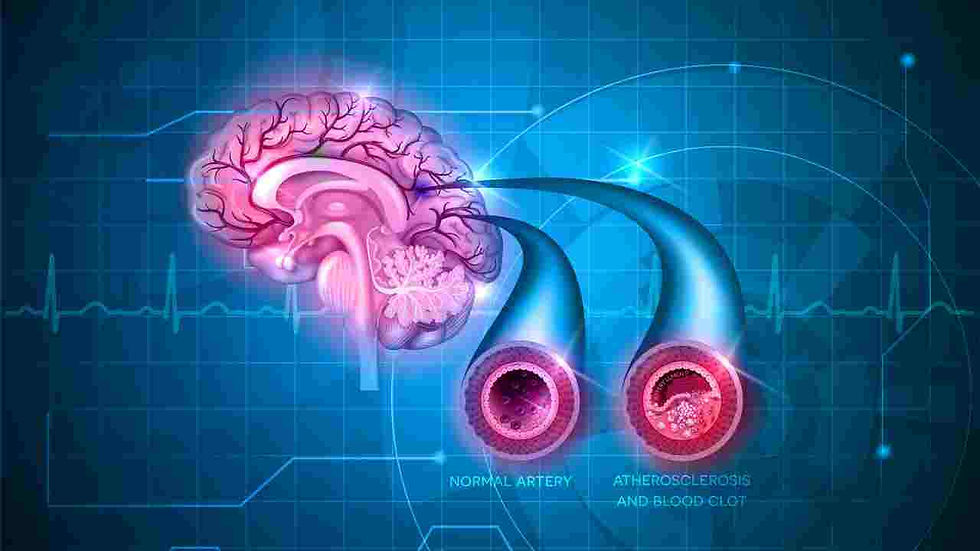Will lipus treatment reduce vascular dementia??
- abhishek6945
- Apr 11, 2023
- 4 min read
Around 50 million individuals worldwide suffer from dementia, and 10 million new cases are reported each year. Presently there is no cure for vascular dementia and Alzheimer’s disease, which are the most typical causes of dementia. Additionally, the blood-brain barrier that stops heavy molecules from penetrating the brain tissue is formed by the tightly packed cells lining the brain’s blood vessels. This barrier restricts the variety of medications and treatments that may be used to treat dementia. Consequently, the search for the treatment of vascular dementia is being continued for decades [1].
What is lipus?
A type of sound wave with frequencies of more than 20,000 Hz is an ultrasound wave.
Low-intensity pulsed ultrasound (LIPUS) is a type of ultrasound that is supplied at a significantly lower intensity (3 W/cm2) than regular ultrasound energy and output in the style of a pulse wave.
It is primarily used for therapeutic purposes in rehabilitative medicine. This technology has been utilized as a kind of physical therapy for conditions like tendinitis since the 1950s.
Due to its low intensity, LIPUS has few thermal effects. Most researchers are interested in its non-thermal effects, which are typically claimed to cause therapeutic changes in the tissues[2].
How does lipus work?
There are two types of mechanisms, which will explain the therapeutic effects of lupus on the tissues – thermal effects and non-thermal effects.
Thermal effects: The energy carried by the ultrasonic beam gets reduced as it passes through the tissues, and the energy coming out of the beam gets absorbed somewhere else in the tissue, causing oscillation of the particles in the tissue. This vibration will cause heat production in the tissues which give thermal effects.
Non-thermal effects: These are mainly responsible for the therapeutic usage of lipus. They include cavitation (ability to form bubbles), acoustic streaming (streaming of fluids that affect tissue permeability), and micro-massage (because of vibrating molecules that affects permeability). The main reason for the formation of these effects is the vibrations of tissue particles created by ultrasonic waves.
With these thermal and nonthermal effects, lipus promotes biological effects like increasing the regeneration of soft tissues, suppressing inflammatory responses, and aiding the healing of bone fractures by cell proliferation, activation, and differentiation.
This justifies its usage in many clinical therapies like dementia. Apart from dementia, it is also used in many urological conditions such as erectile dysfunction, and chronic prostatitis [3].
Relationship between ultrasound and dementia?

The predominant risk factor in vascular dementia is stroke due to impaired blood supply to the brain. The application of ultrasound waves increases the permeability of the blood-brain barrier thereby promoting proper blood supply to the brain. According to the literature, it has been proved that in animals (mice, and pigs) with myocardial ischemia (a situation where there is an insufficient blood supply to the heart), lipus increased the development of new blood vessels. This occurs due to the cell proliferation activity of ultrasound waves. This reduces the chances of getting a stroke and hence prevents vascular dementia to a greater extent. Other cardiovascular diseases like coronary artery disease, atrial fibrillation, and prolonged hypertension, which can act as potential risk factors for vascular dementia can also be reduced by the cell proliferating activity of new blood vessels created by these pulse waves.
Apart from increasing the blood supply to the heart, lipus also plays a role in encouraging nerve regeneration as well as increasing the production of proteins essential for nerve cell development and survival. This improves the cognitive ability of patients who are already suffering from vascular dementia. It has also been discovered that treatment with these low-intensity ultrasonic waves, at the hippocampus region (part of the brain important in memory), improves dementia in animals. But the exact mechanism behind this action is not yet documented and requires further research. The action of lipus in reducing dementia has been well documented in the literature in cases of animals like mice, and pigs. Several clinical studies are required to know its action in human beings and are currently under trials [4].
Listen to the waves of sound and relax!
LIPUS therapy is a non-invasive physiotherapy that can be used repeatedly in high-risk elderly individuals suffering from vascular dementia for the improvement of dementia symptoms. It does not require the use of anesthesia or surgery. If the human trials that are conducted shows impressive results, lipus can be considered as a new ray of hope in the treatment of vascular dementia.
References
S. M. D. Brucki, A. C. Ferraz, G. R. de Freitas, A. R. Massaro, M. Radanovic, and R. R. Schultz, “Treatment of vascular dementia. Recommendations of the Scientific Department of Cognitive Neurology and Aging of the Brazilian Academy of Neurology,” Dement Neuropsychol, vol. 5, no. 4, pp. 275–287, 2011, doi: 10.1590/S1980-57642011DN05040005.
K. Eguchi et al., “Whole-brain low-intensity pulsed ultrasound therapy markedly improves cognitive dysfunctions in mouse models of dementia - Crucial roles of endothelial nitric oxide synthase,” Brain Stimulation, vol. 11, no. 5, pp. 959–973, Sep. 2018, doi: 10.1016/j.brs.2018.05.012.
N. D. S. Tramontin, P. C. L. Silveira, L. T. W. Tietbohl, B. D. C. Pereira, K. Simon, and A. P. Muller, “Effects of Low-Intensity Transcranial Pulsed Ultrasound Treatment in a Model of Alzheimer’s Disease,” Ultrasound Med Biol, vol. 47, no. 9, pp. 2646–2656, Sep. 2021, doi: 10.1016/j.ultrasmedbio.2021.05.007.
S. Ichijo et al., “Low-intensity pulsed ultrasound therapy promotes recovery from stroke by enhancing angio-neurogenesis in mice in vivo,” Sci Rep, vol. 11, no. 1, p. 4958, Mar. 2021, doi: 10.1038/s41598-021-84473-6.










Comments